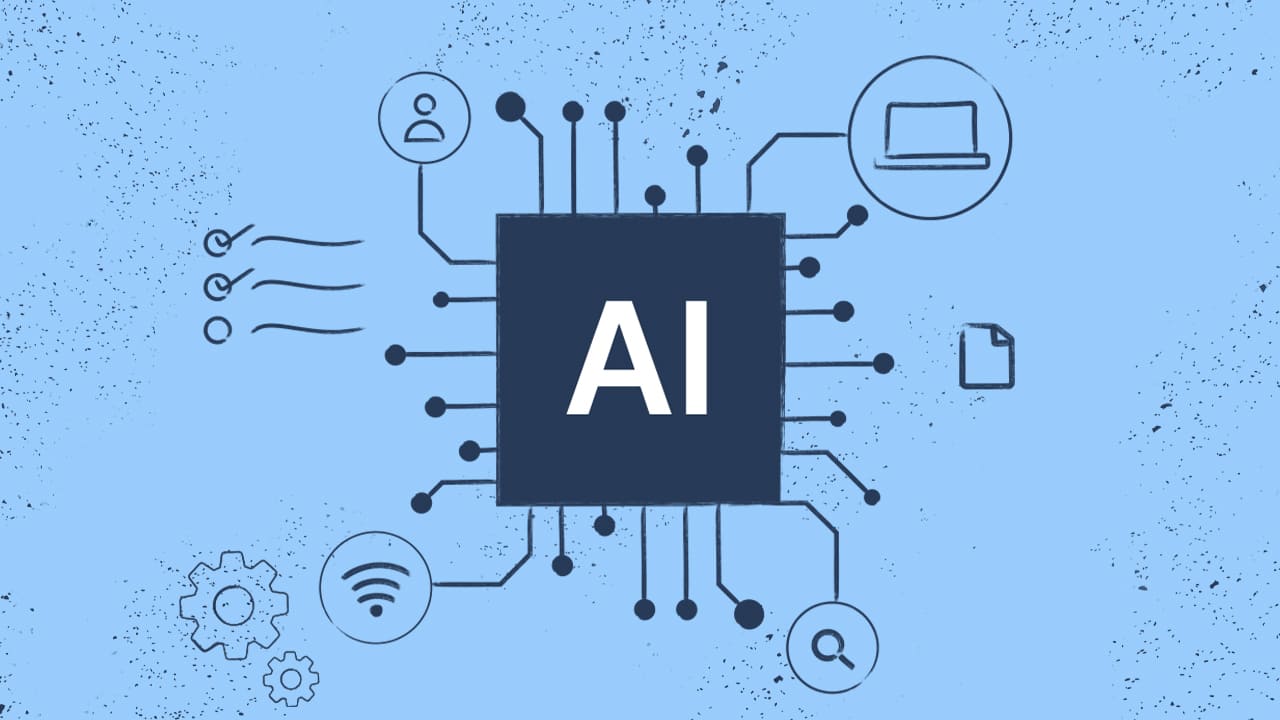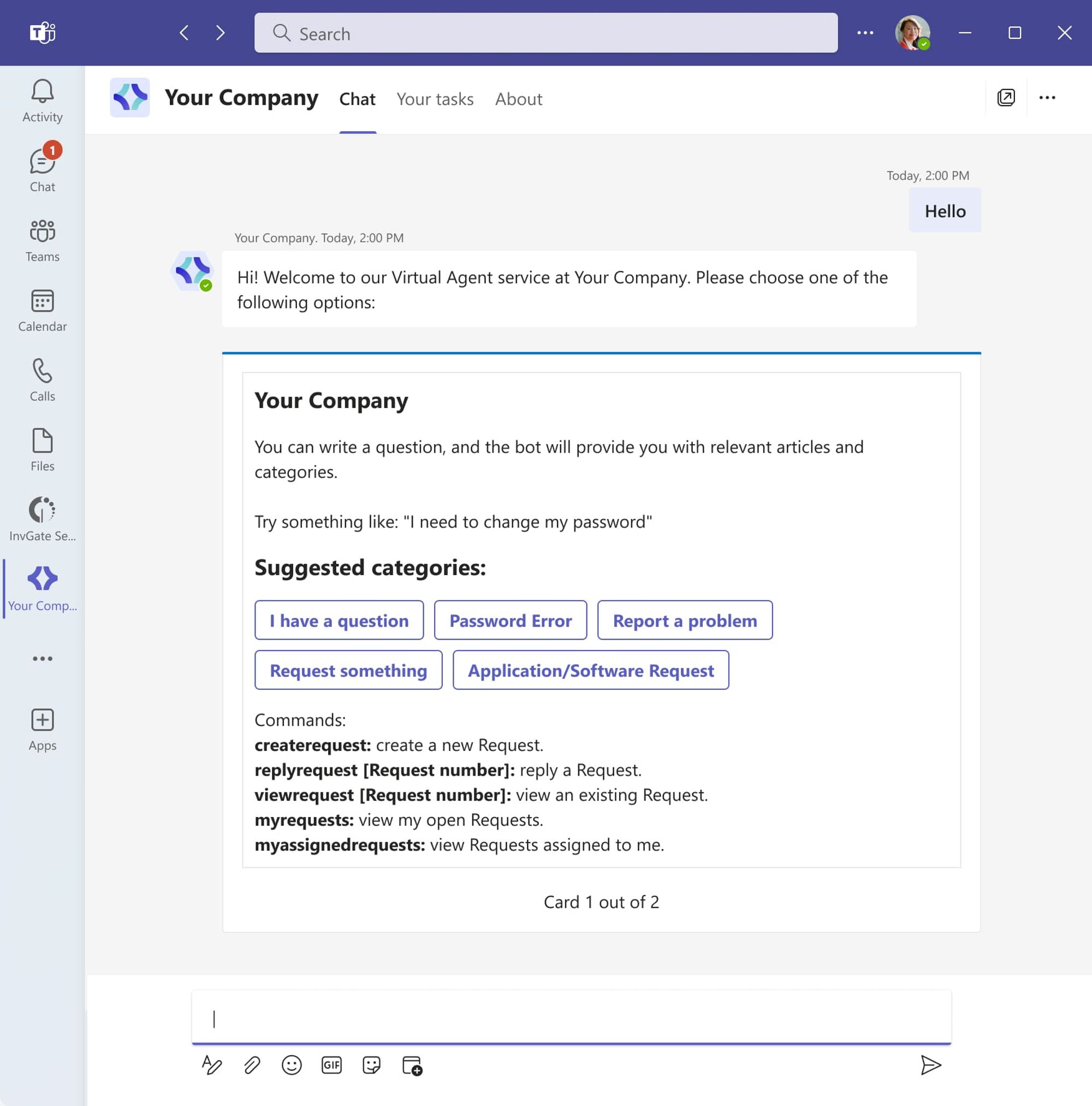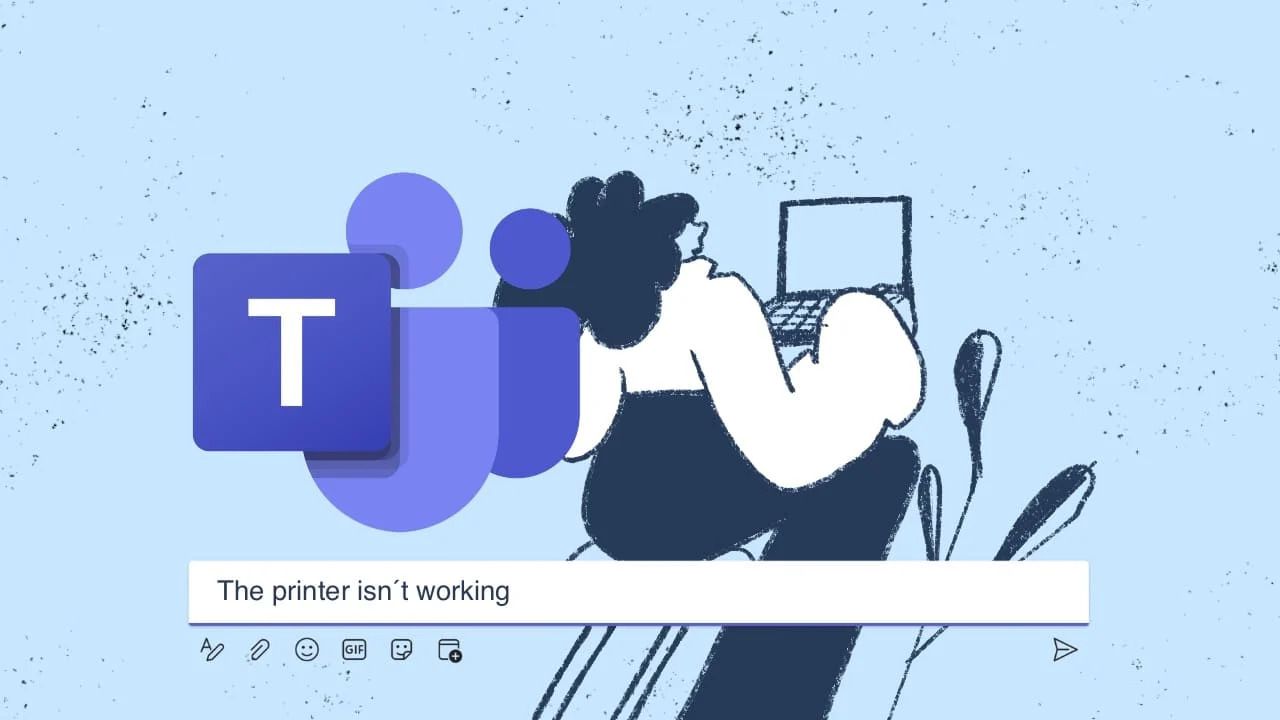Service desks are at the heart of IT support, acting as a bridge between users and IT services. However, the growing demand for instant resolutions and 24/7 availability has stretched traditional service desks to their limits. Enter service desk chatbots — AI-driven support tools that enhance support processes by automating responses and freeing agents to focus on complex issues.
Many organizations are wary of adopting chatbots, often due to concerns about their effectiveness and how they might affect customer interactions. However, IBM reports that chatbots can handle up to 80% of routine tasks and user questions. The real advantage? It frees up human agents to focus on more complex issues that require personal attention.
Let’s break down what service desk chatbots are, how they work, their benefits, and practical use cases to help you understand their value.
What is a service desk chatbot?
A service desk chatbot is an AI-powered tool designed to assist users with IT-related issues by mimicking human interaction. It integrates with ITSM tools and knowledge bases to provide quick answers, automate repetitive tasks, and guide users through troubleshooting steps. Unlike static FAQs or search functions, these chatbots rely on natural language processing (NLP) to interpret and respond to user queries in a conversational format.
For example, instead of navigating through a lengthy knowledge base, a user can simply type, "I need help with my email account.” The chatbot identifies the query’s intent, retrieves the relevant instructions, and delivers them in an easy-to-understand format. Sometimes, it can even help scale issues to the right help desk for support.
InvGate’s Virtual Agent for Microsoft Teams, goes beyond simple question-and-answer models. It leverages AI to summarize knowledge base content, suggest related resources, and provide contextual information. This results in a more intuitive and efficient support experience.

How do IT helpdesk chatbot work?
Service desk chatbots use natural language processing (NLP) to interpret user queries and provide accurate responses. NLP enables the chatbot to understand the intent behind a user’s question, even when phrased in conversational language.
Users engage in a conversation in a chat interface. For example, as we mentioned, InvGate's Virtual Agent is integrated directly into Microsoft Teams, so users don't have to switch platforms and are in a familiar environment.
Here’s an example of how the whole workflow is for the user:
-
User interaction on the same platform:
-
The user starts a chat with the InvGate Virtual Agent within Microsoft Teams.
-
Organizations can personalize the chatbot’s appearance, including its image, logo, greeting message, and name, to align with branding.
-
Shortcuts can be added to the welcome message, displaying commands and pinned categories for easier navigation.
-
-
Query interpretation:
-
Users ask questions in natural language, such as, “How do I reset my password?”
-
The chatbot uses NLP to interpret the question and retrieves relevant information from the knowledge base.
-
-
Providing answers:
-
The chatbot delivers answers based on the knowledge base content, along with suggestions for related articles.
-
If the answer is insufficient, the chatbot offers to create a service request.

-
-
Request creation:
-
Users can create tickets directly through the chatbot.
-
The chatbot suggests request categories, autofills relevant fields, and submits the request.
-
-
Knowledge article support:
-
The chatbot suggests articles from the knowledge base based on the user’s query.
-
It can also generate AI-powered summaries of these articles, making them easier to understand.
-

Benefits of service desk chatbots
IT helpdesk chatbots offer numerous advantages for organizations looking to optimize IT support processes. Here are the key benefits:
1. Improved response times
Chatbots provide instant answers, significantly reducing the time users spend waiting for assistance. This is particularly valuable during peak support hours or when agents are unavailable.
2. Enhanced user experience
Chatbots make IT support more approachable by delivering accurate, conversational responses. Users no longer need to navigate complex ticketing systems or search through lengthy documentation.
3. Cost efficiency
Automating repetitive tasks and first-line support inquiries reduces the need for large support teams, cutting operational costs without sacrificing service quality.
4. 24/7 availability
Unlike human agents, chatbots are always online. They can handle inquiries outside regular business hours, ensuring users receive support whenever they need it.
5. Reduced agent workload
Chatbots take over routine tasks, allowing agents to focus on complex issues that require human intervention. This improves job satisfaction and boosts productivity.
6. Data-driven insights
By analyzing user interactions, chatbots can identify common issues, track support trends, and provide actionable insights to improve IT services.
7. Scalability
As organizations grow, chatbots can handle increased support volumes without the need for additional resources. This makes them ideal for scaling IT operations.

Service desk chatbot use cases
Service desk chatbots have versatile applications across various industries. Let’s explore some common use cases:
1. Password resets
Password-related issues are among the most frequent support requests. Chatbots can guide users through the reset process or automate it entirely, saving time for both users and agents.
2. Ticket creation and updates
Users can report issues and receive updates on existing tickets without contacting a human agent. For example, a chatbot might respond with, “Your ticket #12345 is currently being reviewed by our IT team.”
3. Knowledge base assistance
Chatbots simplify access to information by pulling relevant content from the knowledge base. InvGate’s Virtual Agent, for example, provides AI-generated summaries, delivering clear and concise answers tailored to user queries.

4. Onboarding support
New employees often have questions about IT policies, tools, and resources. A chatbot can act as a virtual guide, answering questions and assisting with setup processes.
5. Remote troubleshooting
Chatbots can guide users through troubleshooting steps for common issues, such as connectivity problems or software errors. For example, they might suggest restarting a device or checking specific settings.
To sum up
Service desk chatbots are reshaping IT support by automating routine tasks, enhancing user experiences, and reducing operational costs. Their ability to integrate with ITSM tools, provide 24/7 support, and improve over time makes them a valuable asset for organizations aiming to optimize their IT service delivery.
Solutions like InvGate’s Virtual Agent bring these capabilities to life, offering AI-powered features that transform how users interact with support systems. These chatbots simplify support processes and deliver measurable results.
As businesses continue to prioritize efficiency and user satisfaction, adopting a service desk chatbot is an investment that pays off in both the short and long term.
Do you want to learn more about InvGate Service Management and see the virtual agent in action? Go grab your 30-day free trial!
















